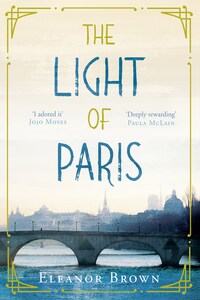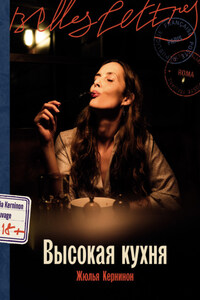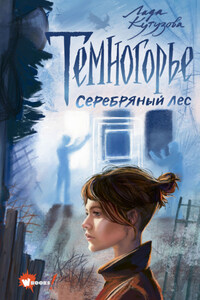The Borough Press
An imprint of HarperCollinsPublishers
1 London Bridge Street
London SE1 9GF
www.harpercollins.co.uk
Published by HarperCollinsPublishers 2016
First published by HarperCollinsPublishers 2016
Copyright © Eleanor Brown 2016
Cover design: Holly Macdonald © HarperCollinsPublishers Ltd 2016. Cover images © Vo Y Phong Mickael/EyeEm/Getty (Paris); Shutterstock.com (frame)
Eleanor Brown asserts the moral right to be identified as the author of this work
A catalogue record for this book is available from the British Library
This novel is entirely a work of fiction. The names, characters and incidents portrayed in it are the work of the author’s imagination. Any resemblance to actual persons, living or dead, events or localities is entirely coincidental.
All rights reserved under International and Pan-American Copyright Conventions. By payment of the required fees, you have been granted the non-exclusive, non-transferable right to access and read the text of this e-book on-screen. No part of this text may be reproduced, transmitted, down-loaded, decompiled, reverse engineered, or stored in or introduced into any information storage and retrieval system, in any form or by any means, whether electronic or mechanical, now known or hereinafter invented, without the express written permission of HarperCollins
Sourse ISBN: 9780007393688
Ebook Edition © February 2016 ISBN: 9780007393695
Version: 2016-06-06
For my parents and my grandparents, especially my grandmothers:
Madeline Mercier Brown and Catherine McReynolds Barnes
Paris in the rain is still Paris.
—Catherine Rémine McReynolds,
November 18, 1923
Contents
Cover
Title Page
Copyright
Dedication
Epigraph
One: Madeleine – 1999
Two: Margie – 1919
Three: Madeleine – 1999
Four: Margie – 1924
Five: Madeleine – 1999
Six: Margie – 1924
Seven: Madeleine – 1999
Eight: Margie – 1924
Nine: Madeleine – 1999
Ten: Margie – 1924
Eleven: Madeleine – 1999
Twelve: Margie – 1924
Thirteen: Madeleine – 1999
Fourteen: Margie – 1924
Fifteen: Madeleine – 1999
Sixteen: Margie – 1924
Seventeen: Madeleine – 1999
Eighteen: Margie – 1924
Nineteen: Madeleine – 1999
Twenty: Margie – 1924
Twenty-One: Madeleine – 1999
Twenty-Two: Margie – 1924
Twenty-Three: Madeleine – 1999
Twenty-Four: Margie – 1924
Twenty-Five: Madeleine – 1999
Twenty-Six: Margie – 1924
Twenty-Seven: Madeleine – 1999
Twenty-Eight: Margie – 1924
Twenty-Nine: Madeleine – 1999
Acknowledgments
Author’s Note
About the Author
Also by Eleanor Brown
About the Publisher
I didn’t set out to lose myself. No one does, really. No one purposely swims away from the solid, forgiving anchor of their heart. We simply make the tiniest of compromises, the smallest of decisions, not realizing the way those small changes add up to something larger until we are forced, for better or worse, to face the people we have become.
I had the best of intentions, always: to make my mother happy, to keep the peace, to smooth my rough edges and ease my own way. But in the end, the life I had crafted was like the porcelain figurines that resided in my mother’s china cabinets: smooth, ornate, but delicate and hollow. For display only. Do not touch.
Long ago, I might have called myself an artist. As a child, I drew on every blank surface I encountered—including, to my mother’s dismay, the walls, deliciously empty front pages of library books, and more than a few freshly ironed tablecloths. In high school, I spent hours in the art room after school, painting until the sun coming through the skylights grew thin and the art teacher would gently put her hand on my shoulder and tell me it was time to go home. Lingering under my Anaïs Anaïs perfume was the smell of paint, and the edges of every textbook I owned were covered with doodles and drawings. On the weekends, I hid from my mother’s bottomless disapproval in the basement of our house, where I had set up an easel, painting until my fingers were stiff and the light had disappeared, rendering the colors I blended on the palette an indiscriminate black.
But I hadn’t painted since I had gotten married. Now, I spent hours leading tour groups through the Stabler Art Museum’s galleries, pointing out the beautiful blur of the Impressionists, the lush clarity of the Romantics, the lawless color of Abstract Expressionism. As we moved between the rooms, I showed them the progression of the paintings, movement washing into movement like the confluence of rivers, the same medium, the same tools, yet so completely different in appearance, in intent, in heart. No matter how many times I explained it, it seemed beautifully impossible that Monet had been creating his gentle pastorals less than a hundred years before the delicious chaos of Jackson Pollock’s murals.








